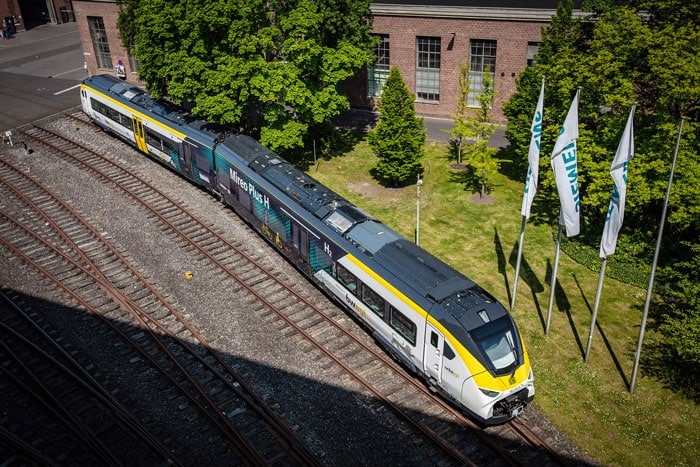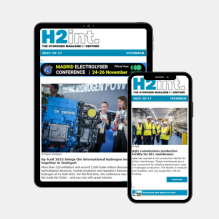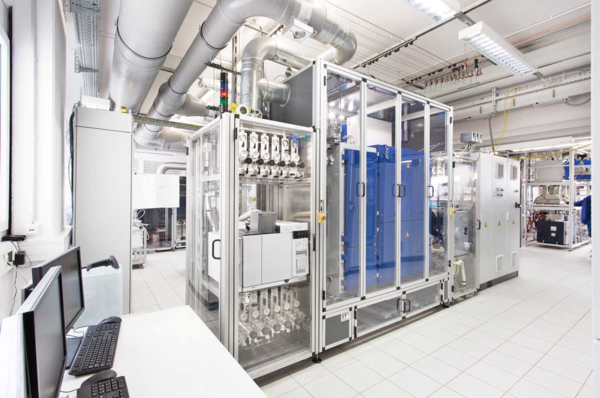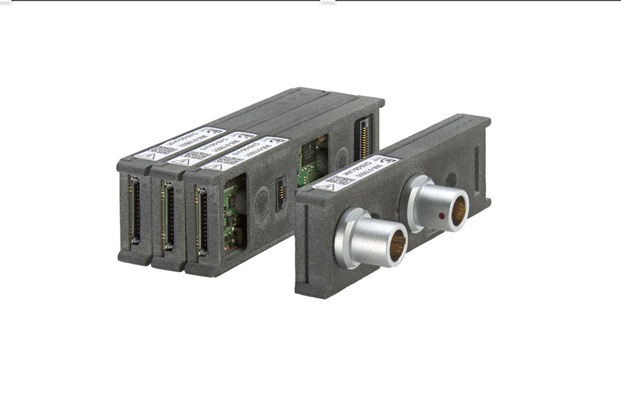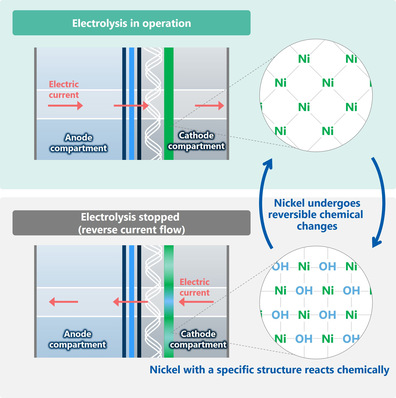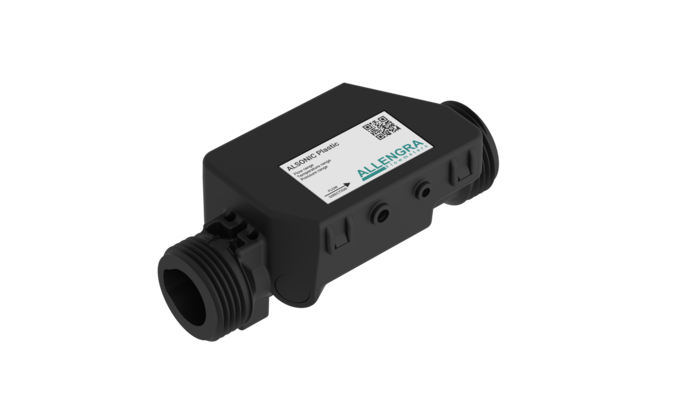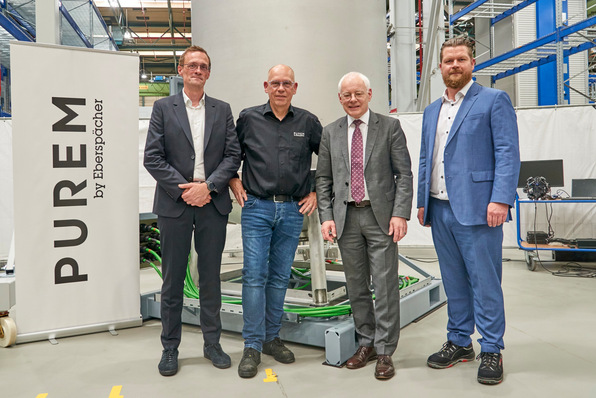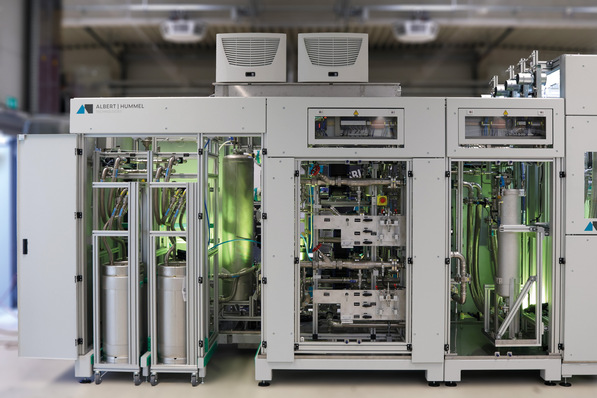Ballard Power is going merrily – one could say “unperturbed” – on its way. The Canadian company already has production capacity at its central location in Vancouver in addition to a completed fuel cell production facility in China for, among other things, buses and trucks. Ballard is investing heavily in research and development and is building a network of strategic partnerships that will eventually lead to mass production for various markets.
Concurrently, Ballard is working on the permanent optimization of its FC products. Which will ultimately reflect in lower prices and will make these products particularly competitive as well as widen the profit margin in the course of scaling. All very normal.
After test projects, Ballard will enter mass production with various partners and OEMs. According to information by the company, this will begin in the second half of 2023 and experience a massive ramp-up in the following years, since the markets addressed (commercial vehicles, etc.) have a very high and very long-term growth potential, built on the decarbonization trend.
Ballard is doing everything right. Logical losses in this phase of transformation are normal. That must be understood by investors first. Ballard is increasingly making commitments with partners and customers that are not in competition with its own business model and is making a joint course of action in the interest of all virtually inevitable. With around 1 billion USD in the bank, Ballard can very well do all this on its own.
With regard to the Inflation Reduction Act (see above), Ballard is directly participating in several ways. The Canadians are going to build their own stack manufacturing facility in Oregon (4,500 stacks per year as target), in order to be eligible for government incentives (manufacturing tax credits). On top of that, Ballard is benefitting from the tax credit of 40,000 USD for any commercial vehicle with a battery-electric or fuel cell drive. This provision now applies to the entire USA. Accompanying that is a special program in which 1.1 billion USD annually in funding is to be directly invested on buses with battery or fuel cell systems. Ballard is a direct beneficiary here in various ways. Which sets it up for future growth.
Meaningful engagement with Forsee Power
Forsee Power, a French battery specialist that Ballard has a share in, is building another production facility in the US, in the state of Ohio. In a press release, it is explicitly pointed out how perfectly the battery solutions from Forsee synergistically fit the fuel cell applications from Ballard. The two companies are working on complete, pre-integrated powertrain solutions.
Forsee Power saw a very depressed price of around 2.50 EUR in July 2022, which rapidly increased to 4.50 EUR in the past few weeks. The company reports very good figures for the first half of the year: 49.7 million EUR turnover, which corresponds to an increase of 34 percent. Ballard Power is one of the largest shareholders and, at the same time, a strategic partner. Forsee’s batteries are perfectly suited for use in the buses of Wrightbus, for which they’ve received an order for 420 battery systems. In addition, they will likely be put into use in buses by Iveco France as well as 20 trash collection vehicles from Ballard Motive, or even in ships or other applications.
The planning of a production facility in the US is, especially considering the support there from the Inflation Reduction Act, perfect in timing. For 2027, Forsee plans to achieve a turnover of 600 million EUR, according to the current press release. A thought: Would a full takeover by Ballard not also be an option, like Nikola did with Romeo Power, to be better- and more independently positioned?
Siemens Mobility sold seven Mireo Plus H units to the Heidekrautbahn project in Berlin/Brandenburg
IM2022056469MO.jpg
Source: Siemens
Ballard partner Siemens Mobility meanwhile reports another order for seven hydrogen-powered trains – Ballard inside. As we heard directly from the company, there will be a new guidance for year 2023 and so on at the investor day in November. This is exciting – we expect a lot to come out of this.
In the meantime, a supplementary appointment was made to the executive board with David Mucciacciaro as Chief Commercial Officer. He worked top positions at Magna, TRW, Lear and ZF, and is expected to drive the commercialization of some of Ballard’s FC products.
Unspectacular figures in the second quarter
Viewed objectively, the current figures are not very spectacular. They correspond to a time frame in which Ballard is positioned for high future growth. This will really gain momentum in the coming years. Specifically: 20.9 million USD turnover and a loss that, with minus 0.19 USD per share, will affect the books. The order backlog amounts to 91 million USD. Some expected orders have been pushed to the next quarter. For the next twelve months, however, the Canadian company expects “important platform wins.” Like with companies such as Siemens in certain markets. From them, large orders are to come in, but also from other markets such as marine and stationary FC systems.
The stock market will allow the expected developments for 2023 onward to unfold in the anticipated price development, is my conviction, based on my own experience. People have to really understand how the company is positioning itself in the new megatrend market of fuel cells and hydrogen. Here, one year is nothing compared to the enormous price potential when production gets to ramping up in all the addressed markets, such as buses, trucks, ships and railways.
Ballard also cannot be compared with companies like Plug, Nel or Bloom, as they have completely different business models. The current turnover is due to pilot projects and small batches, so the number itself, as well as the reported loss, which are based on the large research expenditures (R&D), do not have the relevance that some investors, and also analysts, would like to read in.
Often argued is the disproportion between turnover and stock market valuation. Forget these comparisons. Via Ballard, you can bet on future markets that have a huge growth potential in terms of energy and sustainability (decarbonization). Demand for FC modules and stacks will drive the growth of the company. Special occurrences could also become a driver of the price, for example if Ballard is able to get itself investors like the Adani Group from India or start joint ventures with major companies (platform partners) in various FC markets.
In summation: Do not be unsettled by the low price quotations. Some clear advice: Buy and leave alone, and don’t get rattled. Ballard is not making a splash, but will probably achieve its goals, even if it takes longer than expected. The journey is the destination.
Disclaimer
Each investor must always be aware of their own risk when investing in shares and should consider a sensible risk diversification. The FC companies and shares mentioned here are small and mid cap, i.e. they are not standard stocks and their volatility is also much higher. This report is not meant to be viewed as purchase recommendations, and the author holds no liability for your actions. All information is based on publicly available sources and, as far as assessment is concerned, represents exclusively the personal opinion of the author, who focuses on medium- and long-term valuation and not on short-term profit. The author may be in possession of the shares presented here.
Author: Sven Jösting, written August 30th, 2022


